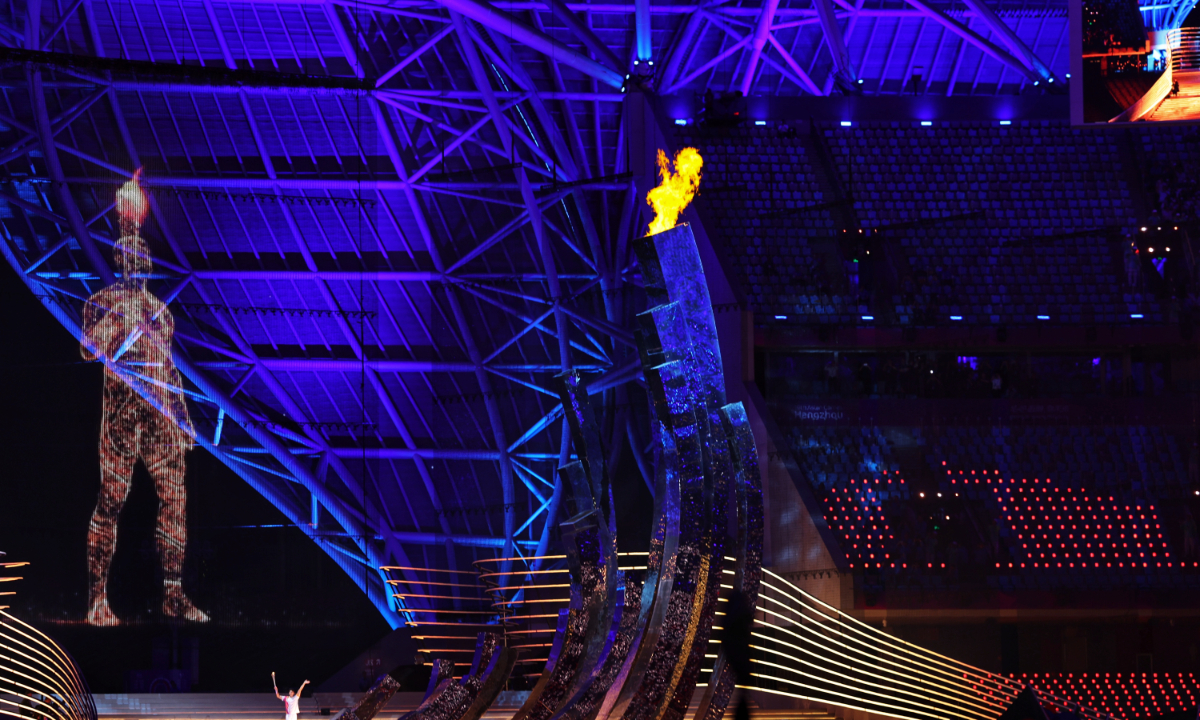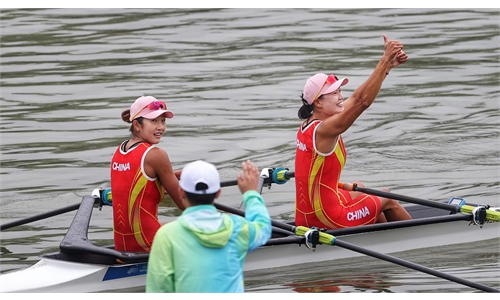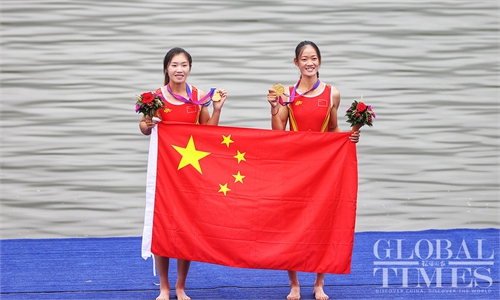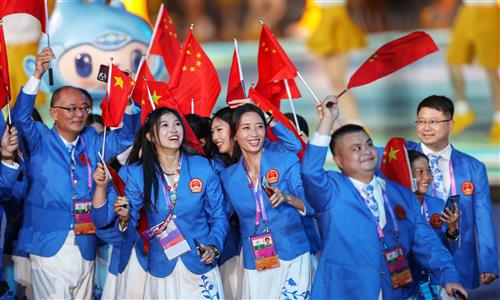Asian Games stadium’s torch tower showcases Zhejiang’s manufacturing power, green technology and Chinese art

Photo: Cui Meng/GT
While the 19th Asian Games’ main torch tower ignited the spirit of sport at the opening ceremony on Saturday in Hangzhou, Zhejiang Province, local high-end manufacturers, entrusted with the design and construction of the tower, has showed the world the “beauty of industry” with their latest self-developed technology and innovation.
The design and manufacturing of the main torch tower were entirely sourced from local Zhejiang enterprises, according to Xinhua News Agency.
In recent years, Zhejiang has been rapidly forging a modern industrial ecosystem with advanced manufacturing as its cornerstone, marked by a steady surge in corporate research and development (R&D) investments.
Through the spectacular main torch tower and many other facilities, the Hangzhou Asian Games have highlighted numerous cutting-edge achievements in independent R&D by local enterprises.
The Hangzhou Asian Games is not only a sporting event but also a creative fusion of technology and traditional Chinese art. The design concept of the main torch tower is inspired by the “the Qiantang River tidal bore” – known as one of the largest tidal bores in the world.
The main torch tower design embodies the images of surging waves and auspicious clouds, with mechanical elements and steel exuding strength and resilience, while its curved lines display gentle and graceful elegance.
In order to convey the dynamic essence of tidal bore, artists and engineers designed the “skeleton,” “skin,” “circulatory system,” and an intelligent brain control system for the torch tower.
The “skeleton” is a biomimetic mechanical system, Dafeng Industrial Co said in a statement. The Zhejiang-based company is a world-leading integrated solution provider for the cultural and sports industry.
The torch tower is composed of 19 uniquely shaped pillars, creating a wave-like appearance, Dafeng said.
The interior of the torch tower adopts a dynamic structure, capable of presenting two forms, a “curling wave” state, which stands at a height of approximately 10 meters, resembling the auspicious clouds often found in traditional Chinese art and an unfolding “wave” as it reaches a height of around 19 meters, mirroring the Qiantang River tidal bore.
In terms of fuel, Dafeng partnered with Geely and employed zero-carbon methanol, perfectly aligning with the environmentally-conscious philosophy behind the Hangzhou Asian Games.
Geely explained in a statement on Sunday that for one ton of zero-carbon methanol produced for the event, it can offset the emissions of 1.375 tons of carbon dioxide or CO2, achieving a closed-loop zero-carbon emission system.
The tower also has an intelligent control system which responsible for managing the mechanical, combustion, lighting, and decorative systems, achieving precise control of each system through data collection and accurate calculations.
Hangzhou is the third Chinese city to have hosted the Asian Games, following Beijing in 1990 and Guangzhou in 2010.
Global Times



